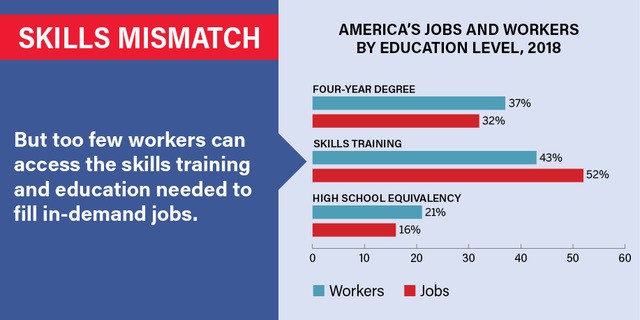National Skills Coalition’s newly updated fact sheets demonstrate the national and state demand for skills training and skilled workers to fill the in-demand jobs that define and support the American economy.
Every day, in communities across our nation, workers seek out opportunities to ensure their families can thrive. At the same time, businesses are anxious to hire skilled workers—people trained for jobs in growing industries like healthcare, medical technology, IT and software, and advanced manufacturing—as well as tradespeople like plumbers and electricians.
These jobs [1], which require education and training that falls between a high school diploma and a four-year degree, are the backbone of the American economy and they depend on a skilled workforce ready to fill them.
For many workers and families, skills training (including on-the-job training, apprenticeships, or two-year degrees) is a ticket into the middle class. And for employers, skills training is a valuable investment in their workforce, business productivity, and long-term success.

But too few people have access to the skills training and education needed to fill the jobs that power our economy. (See chart.) The mismatch between the skills workers have and the skills that in-demand jobs require leaves opportunity on the table. Skills training is the key to filling in-demand jobs—yet without access to skills training and education, workers are locked out of opportunities to succeed.
America’s workforce is its premier economic asset. Unlocking workers’ access to skills training prioritizes what workers and businesses need to fill in-demand jobs in a 21st century economy.

States can respond to this skills mismatch by adopting policies to expand equitable access to skills training, credentials and in-demand careers—particularly for communities who face structural or systemic barriers to participation, like low-income populations, people of color, and immigrants.
Individual employers can similarly invest in their incumbent workforce through in-house or external skills training opportunities facilitated by trusted partners like community colleges and local training providers.
Find out more and download your state’s skills mismatch fact sheet here.
[1] Sometimes called “middle-skill jobs”